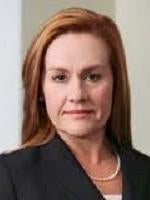During his September 27 remarks at the Eastern District of Texas Judicial Conference, Chief Judge Randall R. Rader of the U.S. Court of Appeals for the Federal Circuit unveiled a new Model Order for the governance of e-discovery in patent cases (the Model Order). The Model Order was drafted by the E-Discovery Committee of the Federal Circuit Advisory Council and was unanimously adopted by the Advisory Council.
Citing the excessive costs of the discovery process, particularly in the context of patent cases, which produce disproportionately high discovery expenses, Judge Rader suggested that the Model Order serve as a starting point for district courts to enforce "responsible, targeted use of e-discovery" in patent cases, the goal being to streamline and impose discipline upon the e-discovery process, particularly with respect to the production of email. The Model Order would require litigants to focus on gathering material information—the "proper purpose of discovery" according to Judge Rader—rather than engaging in unlimited fishing expeditions.[1]
Some of the more significant provisions of the Model Order are as follows:
- Limitations on when email productions can be requested (only after the parties have engaged in "core" discovery concerning the patents at issue, prior art, the accused products, and relevant financials).
- Presumptive limitations on the number of custodians (up to five), keyword search terms for each custodian (up to five), and the relevant time frame for culling purposes. The parties may jointly agree to modify these limitations or request court modification upon the showing of good cause based on the complexities of the case.
- Cost shifting to the requesting party for disproportionate production requests for electronically stored information (ESI), including with respect to the number of requested custodians and number or scope of search terms. A party's dilatory/nonresponsive conduct will be considered in cost-shifting requests, as well as a party's compliance with the Model Order and efforts to promote efficiency and reduce discovery costs.
- Limitations on the production of certain metadata in the absence of a showing of good cause (date and time as well as the distribution list(s) shall generally be included in a production).
- A requirement that email be specifically requested (email requests will not be considered part of a general ESI production request).
- A requirement that email be requested regarding a specific issue as opposed to general discovery of a product or business. The Model Order also requires that the search terms be narrowly tailored to specific issues—simply using the business name or name of the products at issue would be inappropriate unless combined with additional narrowing terms.
- Federal Rule of Evidence 502(d) "clawback" protection for the inadvertent production of privileged or work-product-protected ESI, as well as a provision that a receiving party may not use inadvertently produced material to challenge the privilege designation. These provisions are included in the Model Order to help minimize the costs of human preproduction review.
During his remarks, Judge Rader pointed out that for the Model Order to have an impact, district court judges will need to put it into actual practice as part of the court's inherent power to control its docket to further "economy of time and effort for itself, for counsel and for litigants." Landisv. North Am. Co., 299 U.S. 248, 254 (1936).
The Model Order itself, as well as an introduction and discussion of the Model Order by the Federal Circuit Advisory Council E-Discovery Committee, is available online athttp://memberconnections.com/olc/filelib/LVFC/cpages/9008/Library/Ediscovery%20Model%20Order.pdf.
The e-discovery committee that drafted the Model Order included, among others, judges from three district courts: Chief Judge James Ware (N.D. Cal.), Judge Virginia Kendall (N.D. Ill.), and Magistrate Judge Chad Everingham (E.D. Tex.). All three of these district courts are part of the Patent Pilot Program begun earlier this year in which 14 federal district courts were selected to participate in a 10-year pilot project designed to enhance expertise in patent cases among U.S. district judges.
It remains to be seen whether district court judges will use the Model Order, or variations of it, in their patent cases. If the Model Order is used, it will significantly alter the way e-discovery is conducted in patent cases, likely resulting in substantial cost savings for patent litigants. One word of caution: the Model Order does not eliminate or otherwise alter the duty of patent litigants and their counsel to identify and preserve potentially relevant ESI.





 />i
/>i

